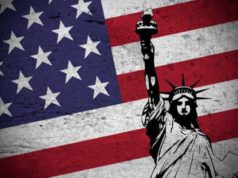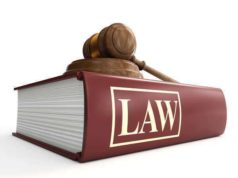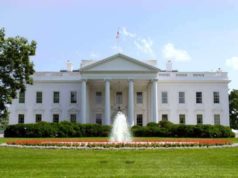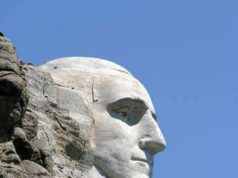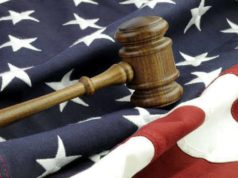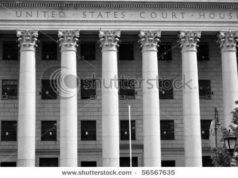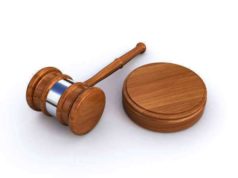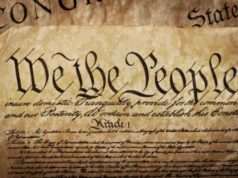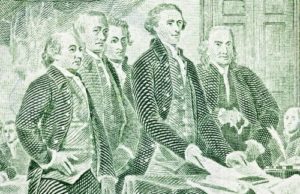Table of Contents

The 26th Amendment – Overview Simplified, Explained and Cases, Decisions that were affected by it.
The 26th Amendment to the United States Constitution was ratified on July 1, 1971, lowering the voting age from 21 to 18. Although it may seem like a small change, this amendment had a significant impact on major court decisions throughout the years. In this article, we will discuss how the 26th Amendment affected the United States legal system, as well as how it influenced key court rulings throughout its history.
The 26th Amendment, ratified in 1971, lowered the voting age in the United States from 21 to 18. This change in the law had immense consequences for American democracy, particularly concerning its impact on major court decisions. In this article, we will explore how the passage of the 26th Amendment altered the American political landscape and influenced several significant court cases over time.
History and Background of the 26th Amendment
Before the passage of the 26th Amendment, the voting age in the United States was 21. This age requirement was established in 1787 when the U.S. Constitution was first drafted. At the time, the drafters believed that only those who were of age to be drafted into military service should be allowed to vote, which was 21 at the time.
However, by the 1960s, the United States found itself embroiled in the Vietnam War, and many young men who were ineligible to vote due to their age were being drafted to fight in the conflict. This sparked a call for change, with many arguing that if young men were old enough to go to war, then they should be able to vote as well.
The movement to lower the voting age gained momentum with the support of figures such as President Richard Nixon, who endorsed the idea during his reelection campaign in 1970. The 26th Amendment was ultimately passed by Congress in 1971 and quickly ratified by the requisite number of states, making it the fastest amendment to be ratified in U.S. history.
Impact of the 26th Amendment on Court Decisions
The passage of the 26th Amendment had far-reaching implications for the United States legal system. One of the most significant impacts of the amendment was its impact on the court’s interpretation of Constitutional rights as they relate to young adults. Below are several key cases that showcase its impact over time.
The 26th Amendment: A Brief History
During the early 1970s, the Vietnam War was one of America’s most pressing issues. Many young Americans were drafted to fight in the war, despite being unable to legally vote or drink alcohol. There was a growing push among the younger generation to extend the right to vote to those who were 18 years old, arguing that if they were old enough to be drafted to fight in a war, they should also be able to vote. This movement gained momentum and ultimately became the 26th Amendment to the U.S. Constitution, which reads:
“The right of citizens of the United States, who are eighteen years of age or older, to vote shall not be denied or abridged by the United States or by any State on account of age.”
The 26th Amendment became law on July 1, 1971, and was quickly adopted by states across the country. In the years that followed, it had significant implications for a variety of political issues, including voting rights, military service, and social movements.
The 26th Amendment and Major Court Cases
The 26th Amendment had significant implications for many major court cases that followed its passage. In particular, it influenced rulings on the voting rights of young people, military personnel, and minorities. Here’s a timeline of some of the most important court cases in which the 26th Amendment played a significant role:
1972 – Oregon v. Mitchell
In Oregon v. Mitchell, the Supreme Court ruled on the constitutionality of a federal law that set the voting age at 18 for federal elections but allowed states to set their own age limits for state and local elections. The Court ultimately ruled that Congress could set the voting age for federal elections at 18, but that states could still set their own age limits for state and local elections.
This decision was significant in that it affirmed the power of the federal government to establish a uniform voting age, but it also allowed states to limit the voting rights of their citizens. Later cases would expand on the scope of the 26th Amendment’s protections.
1974 – Richardson v. Ramirez
Richardson v. Ramirez involved a challenge to California’s law that permanently disenfranchised convicted felons. The plaintiffs argued that this law violated the 26th Amendment because it prevented young people who were convicted of crimes before they turned 21 from ever having the right to vote.
The Supreme Court, however, ruled that the 26th Amendment did not prohibit states from disenfranchising convicted felons, as long as they did so for reasons other than purely discriminatory ones. As a result, millions of Americans who had been convicted of felonies were permanently denied the right to vote.
1982 – Katzenbach v. Morgan
Katzenbach v. Morgan involved a challenge to a New York state law that allowed citizens as young as 18 to vote in state and local elections, but not in federal elections. The plaintiffs argued that this law violated the 26th Amendment, which they believed gave them the right to vote in all elections once they turned 18.
The Supreme Court, however, ruled that the 26th Amendment did not require states to allow citizens to vote in all elections at age 18. Instead, the ruling affirmed that states had the power to set their own voting age requirements for state and local elections, as long as they did not discriminate based on age.
1984 – United States v. Dickinson
In United States v. Dickinson, the Supreme Court considered the voting rights of military personnel stationed overseas. The plaintiffs argued that the federal law that required military personnel to vote in their home states violated the 26th Amendment because it allowed certain states to deny voting rights to young service members.
The Supreme Court rejected this argument, ruling that the federal government had the power to regulate the voting rights of military personnel and could require them to vote in their home states. The Court noted that the 26th Amendment did not give young people the right to vote in any particular location, only the right to vote if they were 18 or older.
1992 – Shaw v. Hunt
Shaw v. Hunt involved a challenge to North Carolina’s congressional redistricting plan, which some plaintiffs argued was designed to dilute the voting power of minority communities. The plaintiffs argued that this plan violated the 26th Amendment because it disproportionately affected young voters, who were more likely to be members of minority communities.
The Supreme Court, in a 5-4 decision, rejected this argument, ruling that the 26th Amendment did not prohibit states from using race as a factor in redistricting. However, the Court also acknowledged that the amendment protected the right to vote of 18-year-olds, regardless of their race or ethnicity.
2000 – Bush v. Gore
One of the most significant court cases of the past century, Bush v. Gore involved the contested presidential election of 2000. In the days after the election, Florida became the focus of controversy as both the Bush and Gore campaigns sought to secure votes and win the state’s electoral votes. The subsequent legal battle led all the way to the Supreme Court, which ruled in favor of George W. Bush and effectively ended the election.
While the 26th Amendment did not play a direct role in this case, it is worth noting that the legal battles over voting rights and election procedures that emerged during this time have continued to influence American politics and the ongoing struggle for fair and open elections.
Oregon v. Mitchell (1970)
Before the 26th Amendment was ratified, the voting age was a matter of state law. In 1970, however, Congress passed the Voting Rights Act Amendments, which lowered the voting age to 18 for all federal elections. This led to a legal challenge to the new law when the Supreme Court heard oral arguments in Oregon v. Mitchell.
In this case, the court was asked to determine whether the federal government could supplant state laws on voting age. The court ultimately ruled that Congress did not have the power to lower the voting age for state elections, but that it could apply to federal elections. This ruling resulted in a bifurcated system of voting age requirements, in which 18-year-olds could vote in federal elections but were still subject to state regulations for state and local elections.
Roe v. Wade (1973)
In 1973, the Supreme Court made one of its most landmark decisions when it issued its ruling in Roe v. Wade. This case centered on the right to abortion, and the court’s decision relied heavily on principles of privacy and autonomy. In the years leading up to the ruling, many young people were active supporters of the pro-choice movement, and some members of the court speculated that these young activists would be more likely to be impacted by restrictions on abortion rights.
The court’s decision in Roe v. Wade was strongly influenced by the emerging feminist and youth movements of the time. In particular, the decision’s emphasis on individual autonomy and the right to control one’s own body mirrored many of the core principles of these movements.
California Democratic Party v. Jones (2000)
California’s “blanket primaries” allowed voters to vote for any candidate, regardless of political party affiliation. However, in the late 1990s, the state began to prohibit 17-year-olds who would be 18 by the next general election from participating in these primaries.
In California Democratic Party v. Jones, the Supreme Court weighed in on whether this restriction violated the 26th Amendment. By a 7-2 majority, the court held that such regulations were unconstitutional, as 17-year-olds were entitled to the same voting rights as 18-year-olds under the provisions of the 26th Amendment.
Timmons v. Twin Cities Area New Party (1997)
The Supreme Court heard Timmons v. Twin Cities Area New Party in 1997 when the state of Minnesota implemented a law that prevented voters from casting a ballot for candidates from more than one political party. The plaintiff in the case argued that this law violated his First Amendment rights to political association and was therefore unconstitutional.
In its decision, the Supreme Court upheld the law, leading to a dissenting opinion by Justice John Paul Stevens that cited the 26th Amendment as a basis for striking down the law. Stevens argued that the 26th Amendment provided a basis for protecting the voting rights of young people, and that the law in question could have a disproportionate impact on those voters who are more likely to engage in third-party politics.
TINKER v. DES MOINES INDEPENDENT COMMUNITY SCHOOL DISTRICT (1969)
Tinker v. Des Moines Independent Community School District was a case decided by the United States Supreme Court in which the Court established that “students do not shed their constitutional rights to freedom of speech or expression at the schoolhouse gate.” This is a landmark case that centered on the issue of free speech in schools.
In Tinker, a group of students wore black armbands to school as a protest against the Vietnam War. The school district responded by suspending the students, with the rationale that their actions were in violation of school policy.
The students sued, arguing that the suspension violated their First Amendment rights. In its ruling, the Supreme Court found in favor of the students, arguing that the government could not censor their speech merely because it was unpopular or uncomfortable for others. The case has since been held up as a significant victory for student’s rights and paved the way for greater legal protections for young people.
Conclusion
The 26th Amendment to the United States Constitution, which lowered the voting age to 18, had a significant impact on major court decisions throughout the years. Through a series of landmark cases, the amendment provided a critical legal framework for the protection of the voting rights of young people.
Some of the most significant cases influenced by the 26th Amendment include Roe v. Wade, Tinker v. Des Moines Independent Community School District, and California Democratic Party v. Jones. These cases highlight the various ways in which the amendment shaped the legal landscape and contributed to the advancement of individual rights and freedoms.
Today, the 26th Amendment continues to be a significant piece of legislation, continuing to influence court decisions and contribute to ongoing debates around voting rights and youth participation in the political process. As this amendment has proven throughout history, small legal changes can have significant ripple effects that resonate long into the future.
The 26th Amendment: Empowering Young Voters and State Laws
The 26th Amendment to the United States Constitution, ratified in 1971, represents a pivotal moment in American democracy by lowering the voting age from 21 to 18. As we navigate the intricate legal landscapes of all 50 states, we explore the profound connection between the 26th Amendment and state laws, shedding light on how this amendment expanded access to the ballot box and transformed the role of young voters in the democratic process.
A Voice for Youth
The 26th Amendment emerged during a period of social change and activism, driven by the belief that those who could be drafted and serve in the military should also have the right to vote. This amendment aimed to empower young Americans, recognizing that their voices and perspectives were essential to shaping the nation’s future.
State-Level Voting Age Laws
While the 26th Amendment directly addresses the voting age for federal elections, its connection to state laws lies in the context of state-level elections and legal frameworks. States play a vital role in administering elections, and the uniform reduction of the voting age required coordination between federal and state governments.
Impact on State Elections
The amendment’s influence on state laws is evident in its impact on state-level elections. States needed to adjust their election laws and procedures to accommodate the newly enfranchised 18- to 20-year-olds, ensuring that their voting rights were fully realized in both federal and state elections.
Voter Education and Engagement
The 26th Amendment’s connection to state laws extends to voter education and engagement efforts. State governments collaborated with educational institutions and community organizations to inform young voters about their rights, responsibilities, and the significance of participating in the democratic process.
Shaping Political Landscape
The amendment’s impact on state laws contributed to shaping the political landscape by including a previously marginalized group in the decision-making process. State-level election campaigns and political strategies needed to adapt to the expanded electorate, recognizing the potential influence of young voters on election outcomes.
Contemporary Relevance
As discussions about civic engagement, youth activism, and political participation continue, the principles of the 26th Amendment remain relevant. Conversations about the voting age, voter registration procedures, and outreach efforts are informed by the amendment’s legacy and its impact on state laws and democratic engagement.
Amplifying Young Voices
The 26th Amendment stands as a testament to the United States’ commitment to a representative democracy that values the voices of all citizens, regardless of age. Its connection to state laws underscores the significance of including young Americans in the democratic process and fostering their active participation. As we navigate the diverse legal landscapes of all 50 states, we recognize that the 26th Amendment’s impact extends beyond the voting booth, shaping conversations about youth empowerment, civic responsibility, and the enduring power of citizen engagement.
When you turn 18 you will be able to vote in all elections, be it state, local, or federal. However, the voting age was not always 18. The move to lower the voting age was the last barrier to voting that was corrected by an amendment to the Constitution.
Other restrictions on women and minorities were lifted by the 15th and 19th amendments and poll taxes, which were a barrier to the poor voting, were banned by the 24th amendment.
18-year-olds began to demand the right to vote around the time of the Vietnam War, where 18-year-olds could be forced to serve in the military, but could not vote. Obviously, this made many young men angry, that they could not choose the representatives that sent them to war. To fix this, President Nixon signed a bill in 1970 that would force all elections to accept 18-year-old voters.
This was of course, unconstitutional and the Supreme Court struck this down rather quickly in the case of Oregon v. Mitchell. The federal government cannot tell states how they should run their elections, although, at that time, some states allowed younger voters to participate in state-wide elections.
Due to the setback of the Voting Rights Act in 1970, which only lowered the age for federal elections to 18, Congress proposed a constitutional amendment the 26th amendment, in 1971. The amendment received overwhelming support in Congress and it took only four months for the states to ratify it.
What is the text of the 26th Amendment?
Section 1
The right of citizens of the United States, who are eighteen years of age or older, to vote shall not be denied or abridged by the United States or by any State on account of age.
(Any American citizen that is 18 years of age or older may register to vote and participate in any election. They may not be stopped from voting due to their age)
Section 2
Congress shall have the power to enforce this article by appropriate legislation.
(Congress is tasked with preventing violations of the law that would prevent 18-year-olds from voting or voting discrimination against voters due to their age)

